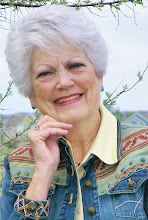What is syntax? I sometimes get caught using words in the wrong order in my writing. It is an easy mistake.
Syntax is the order of words in a sentence. An example from Helen Wilkie's twice weekly Word Tripper is: "While cycling along the street, a big dog suddenly jumped in front of me." Who is cycling, the dog or the person? How do you correct the reference? Change the order of the words.
Any noun following the introduction which includes the "ing" word, must refer to whatever/whomever is performing the action. In the example, the dog is the cyclist. Wilkie offers these solutions: "While cycling along the street, I saw a big dog suddenly jump in front of me." The I refers to the "ing" word. Or "As I was cycling along the street, a big dog jumped in front of me." If you go back and look at the original example, you know something is wrong.
My college A Functional English Grammar says syntax is "The study of the relations of words to one another." It also calls the order of words described above as a form of "Dangling Participle." For instance, "Burning brightly, we watched the flames dance up the chimney." Here, too, the understanding is confusing. What/who is burning? "We" refers to the burning. But are "we" burning? Of course not. The noun following the introduction with the "ing" word is not burning.
My writer's group knows I am death on "ing" words. I'd rather a writer say exactly what they mean, In that case, many "ing" words aren't necessary. Action verbs can take their place. The last example could be changed to: We watched the bright flames dance up the chimney. Omit the phrase completely. We already know the flames are burning. I added bright to enhance the sense of "seeing."
Next I'll have to explain more fully a Dangling Participle. Or, perhaps, address more kinds of "ing" words.
Friday, October 8, 2010
Subscribe to:
Post Comments (Atom)




No comments:
Post a Comment